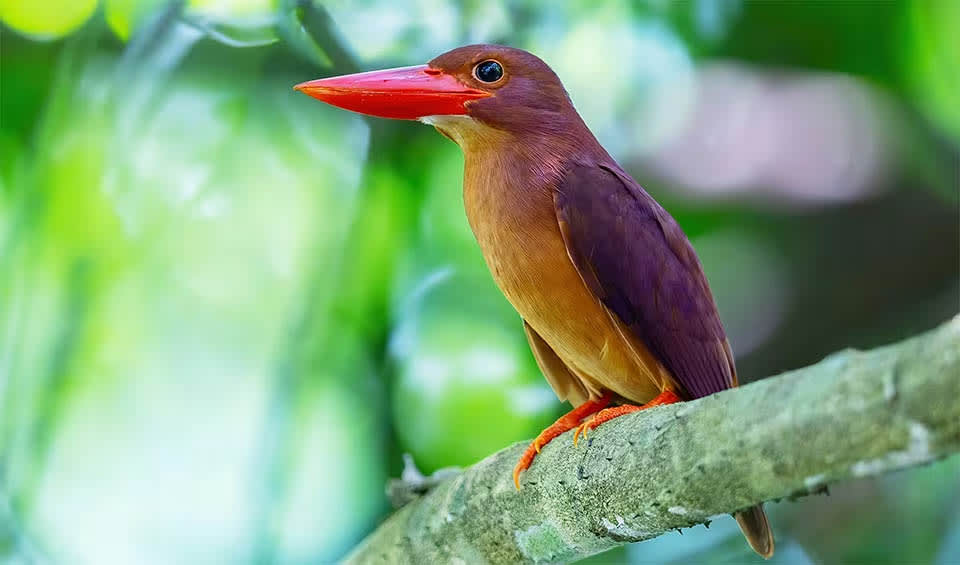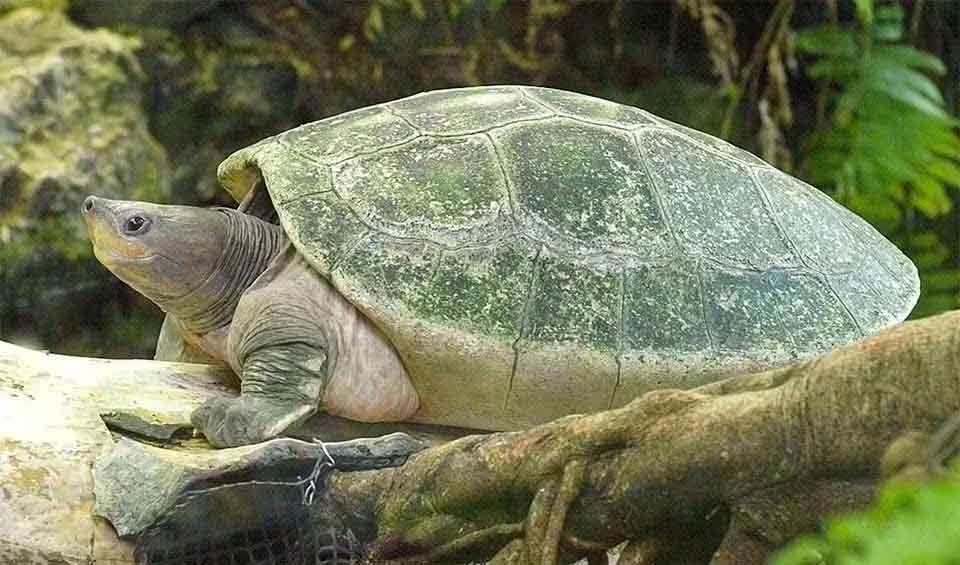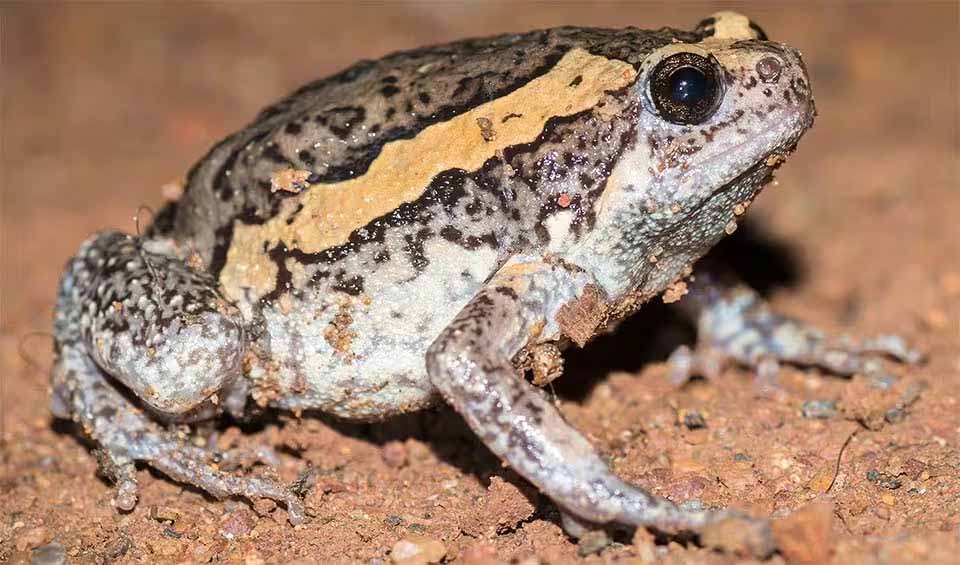Brunei Darussalam, nestled on the northwest coast of Borneo—an island shared with Malaysia and Indonesia—features a diverse range of coastal and inland landscapes. The country’s 130-kilometer-long (81 miles) northeastern coastline along the South China Sea is lined with prominent sandy beaches adjacent to a complex zone of estuarine mangroves and mudflats. The western region consists of an alluvial and often swampy coastal plain, backed by low hills and additional inland swamps. Tropical evergreen rainforest, which covers 81% of Brunei’s land area, dominates the natural vegetation. This includes 22% secondary forest and plantations, with the remaining 59% being primary forest.
Brunei’s mangroves, the largest intact tracts in northern Borneo, along with those in neighboring areas in Brunei Bay, form one of the largest expanses of relatively undisturbed mangroves in eastern Asia. Additionally, the country’s coral reefs cover 45 km² along the coastline, notable for their unique combination of hard and soft corals and gorgonian sea fans, with over 50% live coral coverage, and host to an impressive 400 reef-building coral species. The extensive forests have remained largely unexploited, as most of the population resides along the coast and the economy is primarily focused on hydrocarbon fossil fuels.
Four pillars elaborated:
Brunei has established several protected areas, including Ulu Temburong National Park, Andulau Forest Reserve, Sungai Basong Recreational Park, and the Heart of Borneo Initiative, to preserve its rich biodiversity and natural heritage. These protected areas play a crucial role in maintaining the ecological balance and protecting the diverse species that inhabit Brunei. Land Management
Land Management
Ecosystems face various threats such as land development, pollution, encroachment, climate change, and invasive alien species. Species also face threats like poaching, collection, and invasive alien species. These threats are driven by factors such as economic growth, demand for goods and services, exotic meat, traditional remedies, wild plants, and tourism. These factors have resulted in habitat loss, ecosystem fragmentation, inland water pollution, loss of ecosystem benefits, and species loss. Additionally, emerging threats like climate change are also affecting biodiversity. Threats to Biodiversity
Threats to Biodiversity
Brunei is dedicated to biodiversity conservation and has launched several initiatives to protect its natural resources, involving the government, local communities, and international partners. A central component of these efforts is the creation of forest reserves and marine protected areas that are vital for maintaining the habitats of numerous species. The country has allocated significant portions of land to these reserves, particularly to protect tropical rainforests and peat swamp forests. Additionally, Brunei has developed the National Biodiversity Strategy and Action Plan, which sets specific objectives to mitigate biodiversity loss and aligns with the global Aichi Biodiversity Targets. This plan focuses on ecosystem protection and restoration, managing invasive species, and promoting sustainable land use. Capacity and Governance
Capacity and Governance
To raise public awareness of biodiversity’s importance, Brunei conducts various campaigns, educational programs, and community engagement events, nurturing a culture of environmental stewardship. Furthermore, Brunei is actively engaged in international collaborations, working with neighboring countries and regional organizations to enhance biodiversity conservation through shared expertise and resources, aiming to ensure a sustainable future for all.
The National Biological Resources Policy and Strategic Plan of Action (2015-2035) aims to manage biodiversity excellently to enhance the country’s citizens’ quality of life. It has four strategic objectives to promote biodiversity management strategies, green and well-balanced multisectoral development, research and development networks, and biodiversity awareness. The policy strategies focus on four themes: unique habitats, ecosystems and environmental stability, industrial application, and the international agenda. Future Trends
Future Trends
Biodiversity
Brunei, located on the northern coast of the island of Borneo in Southeast Asia, is renowned for its rich biodiversity and well-preserved natural habitats. The country’s diverse ecosystems include tropical rainforests, mangrove swamps, and coastal areas, each supporting various flora and fauna. Brunei’s rainforests are part of the larger Bornean rainforest, one of the most biodiverse rainforests in the world. These forests are home to numerous plant species, including towering dipterocarp trees, orchids, and ferns. The rainforest canopy supports many wildlife, including primates such as the endangered Bornean orangutan and the proboscis monkey, clouded leopards, sun bears, and various bird species like hornbills and kingfishers.The mangrove forests along Brunei’s coastline are another critical habitat, providing breeding grounds for fish and other marine life while supporting unique flora and fauna adapted to brackish water conditions. These mangroves are home to species such as saltwater crocodiles, mudskippers, and various species of crabs and shellfish. The coastal and marine ecosystems are equally diverse, with coral reefs and seagrass beds supporting various marine species, including sea turtles, dolphins, and numerous species of fish and invertebrates.
In the table below are the number of known species in several main groups, how many of these species are Threatened with extinction, and how many of them are Endemic (unique to Brunei only):
| Species (World rank) |
Threatened | % Threatened | Endemic | % Endemic | |
|---|---|---|---|---|---|
| Mammals | 183 (#66) | 33 | 18.0% | ||
| Birds | 415 (#83) | 41 | 9.9% | ||
| Reptiles | 41 (#126) | 8 | 19.5% | ||
| Amphibians | 12 (#133) | 2 | 16.7% | ||
| Fishes | 501 (#117) | 25 | 5.0% | 1 | 0.2% |
| Plants | 15,000 (#15) | 127 | 0.8% | 65 | 0.4% |
mammals
Sun bear
The smallest of bears is slowly vanishing from tropical forests of Southeast Asia
Flat-headed cat
Known to wash their food before eating it to remove any unwanted debris
Proboscis monkey
Its exaggerated nose has been a subject of scientific intrigue and debate
birds
Helmeted hornbill
Easily recognizable by its massive, ivory-colored casque, which covers its beak
Yellow-vented bulbul
It successfully integrated itself into urban environments, often found in gardens, parks, and even city centers
Ruddy kingfisher
Notoriously difficult to spot due to their preference for dense, shadowy forest habitats
reptiles
Reticulated python
Largest living snakes on the earth, reaching lengths of up to 7 meters of 23 feet
Painted terrapin
Named for the presence of a red strip on their shell during breeding season!
Tomistoma
‘Tomistoma,’ the scientific name of false gharial, literally means ‘sharp mouth’
amphibians
Long-nosed horned frog
The “horn” structure on its nose helps break up its outline, making it harder for predators to spot
Banded bullfrog
These frogs don’t “croak”—their call sounds more like a dog’s bark!
Asiatic toad
The toxin from their parotoid glands has potential antimicrobial and anticancer medicinal properties
National Animals
White-bellied sea eagle
Its broad wings enable it to glide effortlessly on air currents, often seen navigating the coastal winds

















